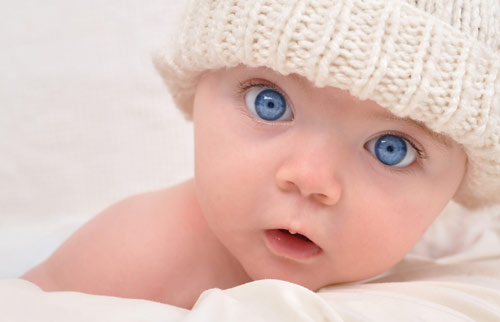美国食品和药物管理局日前举行了一场听证会,以探讨一项旨在规避新生儿先天疾病风险的试管受精新技术是否能够进入人体实验阶段。
借助这一新技术孕育的试管婴儿将有“一父两母”,并且此项产前基因操纵技术可能会使“定制婴儿”成真。伦理学家担忧,这将危及人类道德底线。
这一试管受精新技术的关键在于移除女性卵子线粒体中的缺陷基因。
早在2009年,美国俄勒冈健康与科学大学的科学家就利用“主轴移植”的方式,即用捐赠者卵子的健康线粒体替换母亲的有缺陷线粒体后再实施人工授精,在猕猴身上实验成功,生育出4只健康的小猕猴。
本月25日和26日,美国食品和药物管理局邀请多名医学专家和研究人员参加听证会,以决定是否允许俄勒冈健康与科学大学的研究团队将其实验从猕猴转至人类女性。
采用“主轴移植”方法后,新生儿将拥有自己父亲、母亲的基因,同时携带卵子捐赠者的少部分基因。也就是说,在基因层面,新生儿有两位母亲、一位父亲。
一些伦理学家认为,这项技术的本质就是产前基因操纵,未来可能会进一步演变成按单生产定制婴儿,显然有违人类的伦理道德。

A new technology aimed at eliminating genetic disease in newborns would combine the DNA of three people, instead of just two, to create a child, potentially redrawing ethical lines for designer babies.
The process works by replacing potentially variant DNA in the unfertilized eggs of a hopeful mother with disease-free genes from a donor. US regulators today will begin weighing whether the procedure, used only in monkeys so far, is safe enough to be tested in humans.
Because the process would change only a small, specific part of genetic code, scientists say a baby would largely retain the physical characteristics of the parents. Still, DNA from all three -- mother, father and donor -- would remain with the child throughout a lifetime, opening questions about long-term effects for this generation, and potentially the next. Ethicists worry that allowing pre-birth gene manipulation may one day lead to build-to-order designer babies.
“Once you make this change, if a female arises from the process and goes on to have children, that change is passed on, so it’s forever,” Phil Yeske, chief science officer of the United Mitochondrial Disease Foundation, said by telephone. “That’s uncharted territory; we just don’t know what it means. Permanent change of the human germline has never been done before, and we don’t know what will happen in future generations.”
FDA Hearing
The Food and Drug Administration is scheduled today and tomorrow to explore the issue at a meeting, with doctors and researchers scheduled to talk. The FDA will then decide whether to allow scientists at Oregon Health & Science University in Portland, who engineered the approach, to move their testing program from macaque monkeys to woman.
Potentially, the procedure may cut off mitochondrial diseases that are passed down through females and occur in about 1 in 4,000 people. One example is Melas syndrome, which causes a person to have continuing small strokes that damage their brains, leading to vision loss, problems with movement, dementia and death, according to the National Institutes of Health.
“What the FDA needs to think about is that this isn’t a procedure to repair mitochondrial disease,” said Vamsi Mootha, a professor of systems biology and medicine at Harvard Medical School inBoston who studies mitochondrial disorders. “It’s designed to prevent disease. It’s designed to offer a woman who’s a carrier for disease more options.”
Shoukhrat Mitalipov, the researcher heading the Oregon team’s work, declined to comment before the FDA meeting.
Monkey Research
In early research, four macaque monkeys were born from the procedure, according to a 2009 report by the Oregon researchers in the journal Nature. They were reported as healthy at age 3.
In October 2012, Nature published reports that the technique had also been used in human egg cells. The resulting embryos were allowed to develop to the blastocyst stage, which usually occurs about five days after fertilization.
About half of the egg cells displayed normal development, the scientists found. Though the procedure is legal in the laboratory, the embryos that result from it can’t be implanted in women without the FDA’s consent, leading to today’s session.
There are two types of DNA: nuclear, which is handed down by both parents, and mitochondria, which only comes from the mother. The technology replaces a donor’s nuclear DNA, which determines things like hair color and intelligence, with the same material from the prospective mother, leaving the healthy mitochondria from the donor in place.
The new lab-made egg is then fertilized with the father’s sperm in vitro and implanted in the mother’s womb.
This isn’t the first time that scientists have attempted to disrupt the actions of mitochondria DNA to help fight disease, or the first time the FDA has considered the issue.
Earlier Method
From 1997 to 2003, about 30 children worldwide were born using a method that injected donor mitochondria DNA into eggs after they were fertilized. The first baby born with this technique wasreported in 1997. In 2003, though, the FDA told fertility clinics that genetically manipulated embryos were considered a biological product, and subject to regulation, essentially halting the technique in humans.
The lives of those children should be thoroughly investigated before the new procedure is cleared for use in a human trial, said Sheldon Krimsky, a professor of Urban & Environmental Policy & Planning at Tufts University in Boston.
Ethical Issues
In the 1982 position paper, “Splicing Life,” the President’s Commission for the Study of Ethical Problems in Medicine and Biomedical and Behavioral Research made a distinction between gene therapy that takes place after someone is born compared with manipulation that occurs before, altering the body’s genome.
There was broad consensus that the latter, called germ-line engineering, shouldn’t be pursued, said Krimsky, who was one of the consultants for the paper. That changed “starting in the late 1990s, when people started whittling away at that distinction,” he said in a telephone interview.
“You’re altering the genome of an unborn child, someone who can’t make a judgment about whether they want to be genetically modified,” Krimsky said by telephone. “What will be next, once you allow this?”
Scientists also are concerned that the procedure may not be safe, according to a paper in September 2013 in the journal Science, whose lead author was evolutionary biologist Klaus Reinhardt at the University of Tuebingen in Germany.
Reinhardt’s paper noted that male mice bred from this technique sometimes had altered breathing, as well as reduced learning and exploring capabilities, according to earlier research. Female mice weren’t tested.
The research in mice suggests that the replacement technique may destroy some lines of communication between mitochondria and the cell’s transplanted nucleus, Reinhardt’s editorial said. Though the macaque monkeys don’t show the same problems, there may be long-term issues from the DNA replacement, he wrote.
(来源:中国日报网爱新闻iNews 编辑:丹妮)
